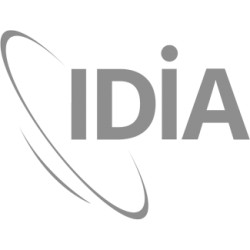Since the MeerKAT radio telescope was inaugurated in 2018, is has been used extensively for observations for the MeerKAT Large Survey Projects, also called LSPs. Of the eight LSPs that were approved even before MeerKAT was ready for full operations, five projects process their data on the IDIA/ilifu research cloud. One of those projects is MIGHTEE. It is a galaxy evolution survey using simultaneous radio continuum, spectro-polarimetry, and spectral line observations from the South African MeerKAT telescope. This means it uses difference features of radio waves, such as frequency and polarization in its observations. Being a survey also means that its aim is to detect thousands of radio galaxies in a few well known fields in the sky. By detecting thousands of galaxies and studying them, astronomers are able to reconstruct the evolution of galaxies, which, for a single galaxy, takes billions and billions of years.
As observations are becoming available, and have been analysed, the time has come to release the early science data to the community of astronomers, who can then combine those observations with others to make more discoveries and understand the evolution of galaxies even better. This sharing aspect of science is very important, as science needs to be reproducible – the same results, or nearly the same must be obtainable by others to ensure the validity of the scientific conclusions scientists make from observations.
In this early science release, the MIGHTEE team has high resolution images of two well-studied areas of the Skys, called the COSMOS and XMM-LSS fields. In their observations are about 30,000 radio galaxies. Such large umbers hint at the big data challenges that processing these observations requires. This is one of the many ways in which cutting-edge scientific research pushes new technologies that are then used in other fields, and in industry. In this case, data science benefits from progress in machine learning and other complex algorithms applied to radioastronomy data.
Astronomers can find the data at this website url.
The scientific publication that accompanies this MIGHTEE Early Science release is accepted for publication in the Monthly Notices of the Royal Astronomical Society, one of the main scientific journals in astronomy.
Reference:
MIGHTEE: total intensity radio continuum imaging and the COSMOS / XMM-LSS Early Science fields, I. Heywood, M. J. Jarvis, C. L. Hale, I. H. Whittam, H. L. Bester, B. Hugo, J. S. Kenyon, M. Prescott, O. M. Smirnov, C. Tasse, J. M. Afonso, P. N. Best, J. D. Collier, R. P. Deane, B. S. Frank, M. J. Hardcastle, K. Knowles, N. Maddox, E. J. Murphy, I. Prandoni, S. M. Randriamampandry, M. G. Santos, S. Sekhar, F. Tabatabaei, A. R. Taylor, K. Thorat, arXiv:2110.00347
